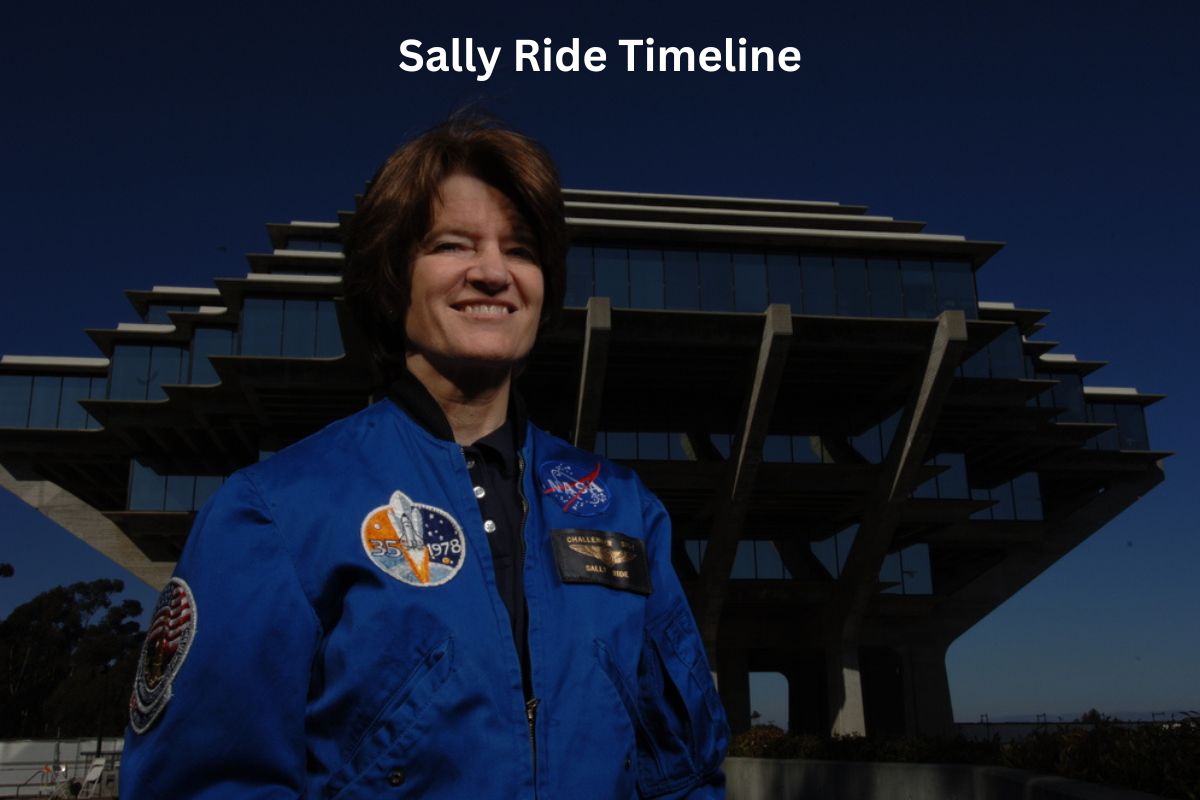Sally Ride, born on May 26, 1951, in Encino, Los Angeles, California, was a trailblazing American astronaut and physicist.
She made history in 1983 as the first American woman to travel to space, a milestone that shattered gender barriers and inspired countless individuals to pursue careers in science and space exploration.
Beyond her remarkable space missions, Sally Ride dedicated her life to advancing STEM education and promoting the inclusion of women in these fields.
Her legacy continues to resonate, as she remains an icon of inspiration and achievement in the realms of science, space, and gender equality.
| Date | Event |
| May 26, 1951 | Sally Kristen Ride is born in Encino, Los Angeles, California. |
| 1968 | Graduates from Westlake School for Girls in Los Angeles. |
| 1973 | Earns a Bachelor of Science degree in physics and a Bachelor of Arts degree in English from Stanford University. |
| 1975 | Completes her Master of Science degree in physics from Stanford University. |
| 1977 | Earns her Ph.D. in physics from Stanford University. Her doctoral research focused on the interaction of X-rays with the interstellar medium. |
| 1978 | Selected by NASA to be one of the first six women astronauts. |
| June 18, 1983 | Becomes the first American woman to travel to space, flying aboard the Space Shuttle Challenger (STS-7 mission). |
| August 30, 1983 | Second spaceflight on the Space Shuttle Challenger (STS-41-G mission). |
| 1984 | Retires from NASA to work at Stanford University’s Center for International Security and Arms Control. |
| 1986 | Co-founds the “EarthKAM” program, which allows students to request images of Earth taken from space. |
| 1987 | Serves on the Rogers Commission to investigate the Space Shuttle Challenger disaster. |
| 1989 | Marries fellow astronaut Steve Hawley; they later divorce in 1997. |
| 2001 | Co-founds Sally Ride Science, a company dedicated to promoting STEM education for girls. |
| 2012 | Receives the Presidential Medal of Freedom from President Barack Obama. |
| July 23, 2012 | Sally Ride passes away at the age of 61 in La Jolla, California, after a battle with pancreatic cancer. |
Timeline of Sally Ride
May 26, 1951: Sally Kristen Ride is born in Encino, Los Angeles, California
Sally Kristen Ride was born on this day, marking the beginning of her remarkable journey. She grew up in Los Angeles and showed an early interest in science and exploration. Little did anyone know at the time that she would go on to break barriers in space exploration.
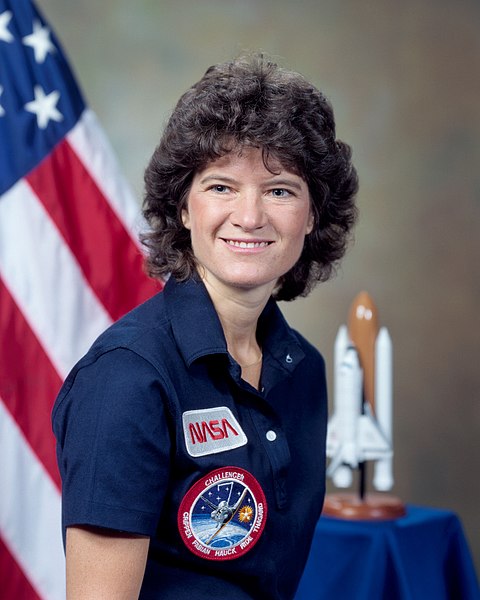
1968: Graduates from Westlake School for Girls in Los Angeles
In 1968, Sally Ride graduated from the Westlake School for Girls in Los Angeles, a significant milestone in her educational journey.
Also Read: Facts About Sally Ride
Even at this early stage in her life, her academic achievements were notable, setting the stage for her future accomplishments in the field of science and space exploration.
1973: Earns a Bachelor of Science degree in physics and a Bachelor of Arts degree in English from Stanford University
Sally Ride’s commitment to academic excellence was evident when she earned dual degrees from Stanford University in 1973.
She graduated with a Bachelor of Science degree in physics, showcasing her dedication to the sciences, and simultaneously obtained a Bachelor of Arts degree in English, reflecting her diverse interests and well-rounded education.
1975: Completes her Master of Science degree in physics from Stanford University
After earning her dual bachelor’s degrees in physics and English, Sally Ride continued her studies and pursued higher education. In 1975, she successfully completed her Master of Science degree in physics at Stanford University.
Also Read: Ellen Ochoa Facts
Her educational journey was marked by a dedication to the field of physics and a commitment to expanding her knowledge in preparation for her future endeavors.
1977: Earns her Ph.D. in physics from Stanford University
Two years after completing her master’s degree, in 1977, Sally Ride achieved a significant milestone by earning her Ph.D. in physics from Stanford University.
Her doctoral research was particularly focused on the intricate interaction between X-rays and the interstellar medium, a topic that contributed to our understanding of astrophysics and the behavior of radiation in space.
This research demonstrated her intellectual prowess and commitment to advancing the frontiers of scientific knowledge.
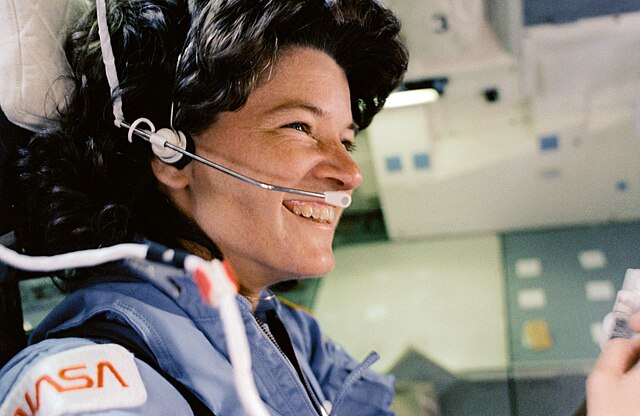
1978: Selected by NASA to be one of the first six women astronauts
In 1978, Sally Ride’s career took a remarkable turn when she was chosen by NASA as one of the first six female astronauts in the history of the United States space program.
This selection was part of NASA’s effort to diversify its astronaut corps and open opportunities for women in space exploration.
Sally Ride’s exceptional academic background and dedication to science made her an ideal candidate for this pioneering role, setting the stage for her historic journey into space in the years to come.
June 18, 1983: Becomes the first American woman to travel to space, flying aboard the Space Shuttle Challenger (STS-7 mission)
June 18, 1983, marked a historic moment not only in Sally Ride’s life but also in the history of space exploration.
On this day, she became the first American woman to journey into space as a mission specialist on the Space Shuttle Challenger’s STS-7 mission. This milestone shattered gender barriers in space travel and inspired countless women and girls to pursue careers in science and aerospace.
During the mission, Sally Ride conducted various experiments and demonstrated exceptional competence in her duties, proving that women were fully capable of excelling in the demanding field of astronautics.
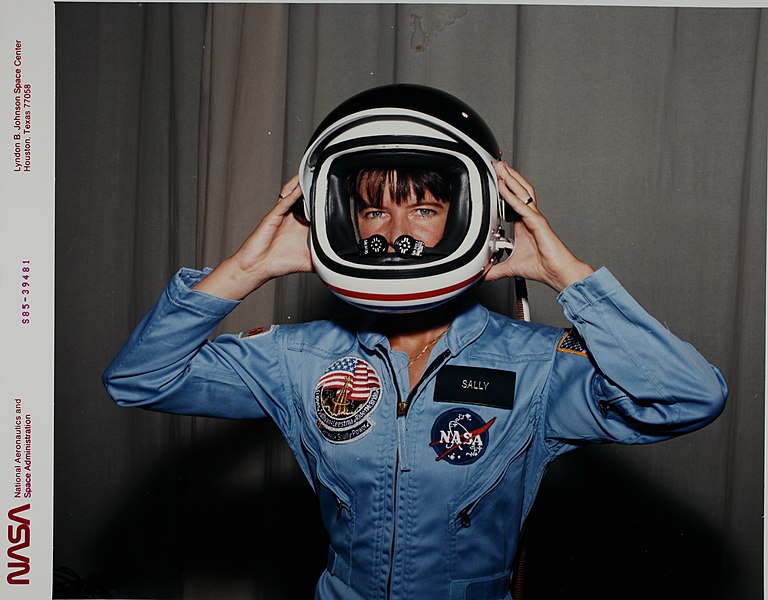
August 30, 1983: Second spaceflight on the Space Shuttle Challenger (STS-41-G mission)
Just a few months after her historic first flight, Sally Ride returned to space on August 30, 1983, as a mission specialist on the Space Shuttle Challenger’s STS-41-G mission.
This mission marked her second journey into space and further solidified her reputation as a highly skilled and accomplished astronaut.
During STS-41-G, she operated the shuttle’s robotic arm and played a critical role in deploying and retrieving satellites, contributing to the advancement of space technology and satellite communication.
1984: Retires from NASA to work at Stanford University’s Center for International Security and Arms Control
In 1984, after her two successful space missions, Sally Ride made the decision to retire from NASA and transition to a new phase of her career.
She joined Stanford University’s Center for International Security and Arms Control, where she worked as a fellow and focused on issues related to arms control and global security. Her expertise in science and technology was instrumental in addressing critical international concerns.
1986: Co-founds the “EarthKAM” program, which allows students to request images of Earth taken from space
Sally Ride’s passion for education and her desire to inspire the next generation of scientists and astronauts led her to co-found the “EarthKAM” program in 1986.
EarthKAM (Earth Knowledge Acquired by Middle school students) allowed middle school students to request and receive images of Earth taken from space by astronauts.
This innovative educational program brought the wonders of space and Earth’s beauty into classrooms worldwide, encouraging students to engage with science and geography in a hands-on way.
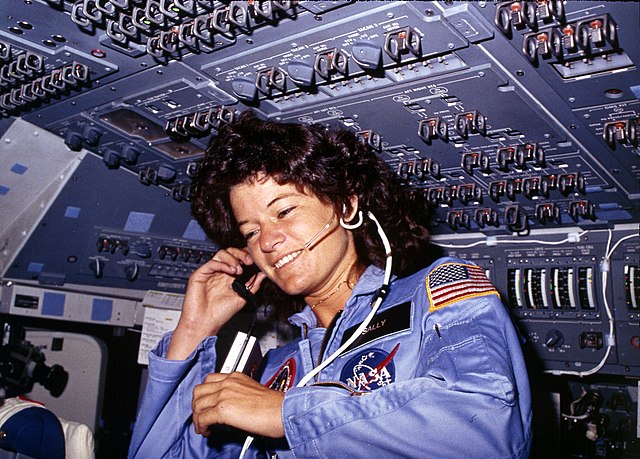
1987: Serves on the Rogers Commission to investigate the Space Shuttle Challenger disaster
In 1987, Sally Ride played a significant role in the investigation of the Space Shuttle Challenger disaster, which occurred in 1986.
She was appointed to the Rogers Commission, formally known as the Presidential Commission on the Space Shuttle Challenger Accident, which was responsible for determining the causes of the tragic accident that led to the loss of the Challenger spacecraft and its crew.
Her expertise as an astronaut and scientist provided valuable insights into the events leading up to the disaster, contributing to the commission’s findings and recommendations for improving safety in space exploration.
1989: Marries fellow astronaut Steve Hawley; they later divorce in 1997
In 1989, Sally Ride married fellow astronaut Steve Hawley, marking a personal milestone in her life. The union of two astronauts captured the public’s imagination and highlighted the achievements of women in space exploration.
However, the marriage eventually ended in divorce in 1997, underscoring the challenges and demands of a career in space science and NASA.
2001: Co-founds Sally Ride Science, a company dedicated to promoting STEM education for girls
Sally Ride’s commitment to inspiring young minds in the fields of science, technology, engineering, and mathematics (STEM) continued to thrive. In 2001, she co-founded Sally Ride Science, a company with a mission to encourage and support girls’ participation and success in STEM disciplines.
Through various programs, workshops, and educational materials, Sally Ride Science aimed to break down barriers and provide opportunities for girls to explore and excel in traditionally male-dominated fields.
This venture reflected Ride’s enduring passion for education and her determination to empower the next generation of female scientists and engineers.
2012: Receives the Presidential Medal of Freedom from President Barack Obama
In 2012, Sally Ride received one of the highest civilian honors in the United States when she was awarded the Presidential Medal of Freedom by President Barack Obama.
This prestigious award recognized her groundbreaking achievements as the first American woman in space and her significant contributions to space exploration, education, and the promotion of science.
It was a testament to her enduring legacy and the profound impact she had on the fields of space science and STEM education.
July 23, 2012: Sally Ride passes away at the age of 61 in La Jolla, California, after a battle with pancreatic cancer.
Tragically, on July 23, 2012, Sally Ride’s remarkable journey came to an end as she passed away at the age of 61. Her battle with pancreatic cancer, a disease that she fought privately, ultimately claimed her life.
Her death marked a profound loss to the scientific community, NASA, and the world of education. However, her legacy as a pioneering astronaut, a tireless advocate for STEM education, and a symbol of gender equality in space exploration lives on.
